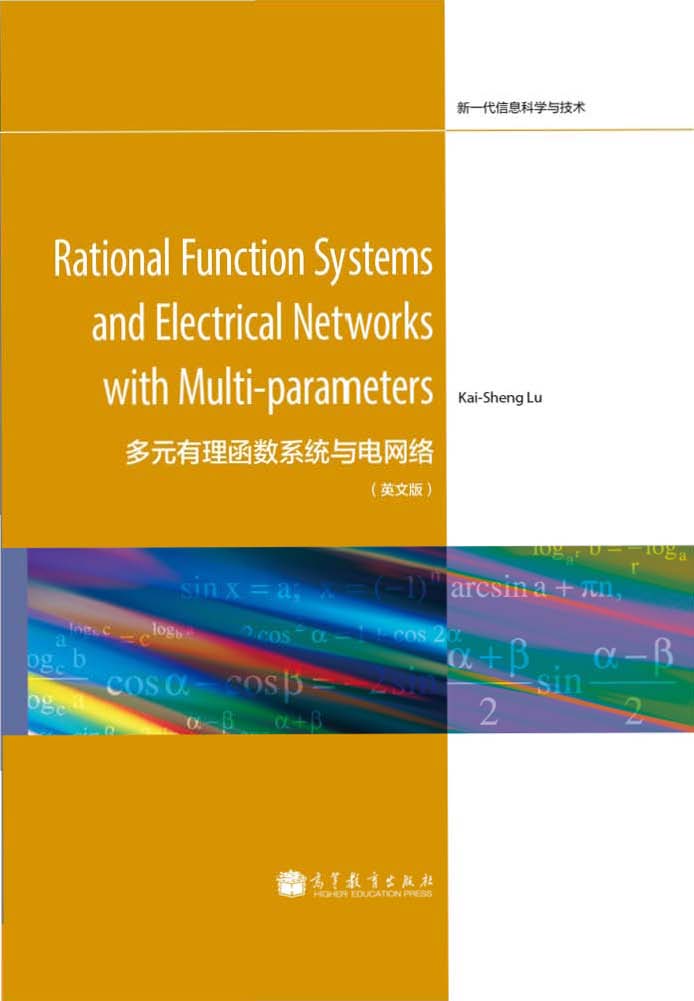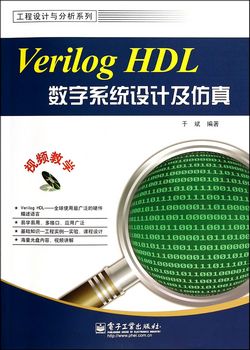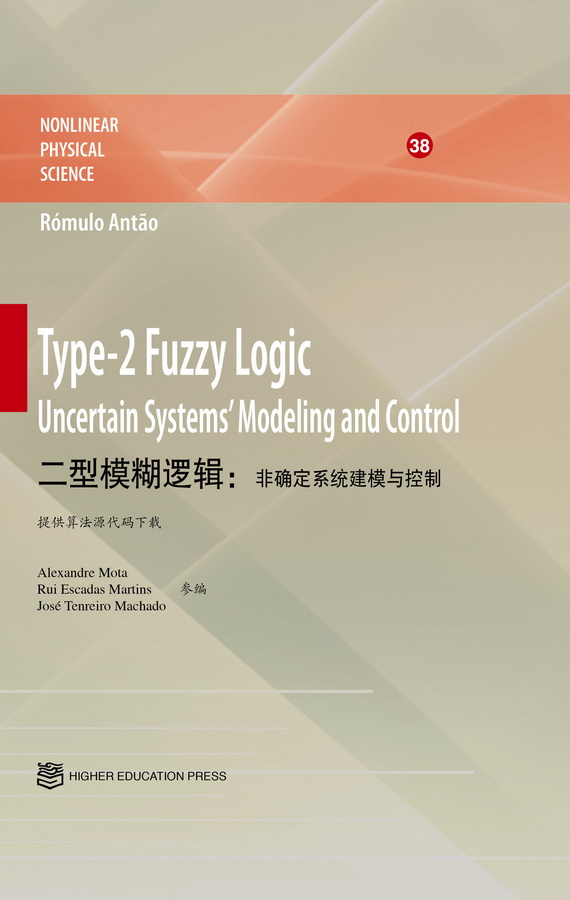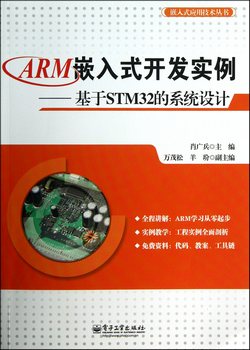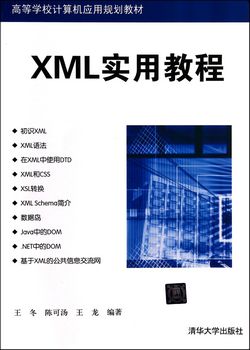多元有理函数系统与电网络(英文版)
作者: Kai-Sheng Lu
出版时间:2012-06-29
出版社:高等教育出版社
- 高等教育出版社
- 9787040346930
- 1版
- 227408
- 46254724-1
- 精装
- 16开
- 2012-06-29
- 450
- 320
- 理学
- 数学
- TM13
- 电子工程
- 研究生及以上
本书主要介绍多元有理函数系统与电网络的结构和性质,详细讨论了域F(z)上的矩阵及其特征多项式的可约性条件;定义了1型矩阵并证明了它的两个基本性质;介绍了独立参量的变量代换条件,域F(z)上线性系统的结构能控能观性问题、电网络的结构性质、RLCM网络的可断性和可约性及能控能观性、有源网络状态方程的存在性条件、能控能观性条件等;附录给出了本书用到的一些知识。
本书适合电子电气、自动化和应用数学(矩阵理论)方向的研究生、科研和工程技术人员参考阅读。
To overcome the problems of system theory and network theory over real field, this book uses matrices over the field F(z) of rational functions in multi-parameters describing coefficient matrices of systems and networks and makes systems and network description over F(z) and researches their structural properties: reducible condition of a class of matrices over F(z) and their characteristic polynomial; type-1 matrix and two basic properties; variable replacement conditions for independent parameters; structural controllability and observability of linear systems over F(z); separability, reducibility, controllability, observability and structural conditions of networks over F(z), and so on. This book involves three subjects: systems, networks and matrices over F(z), which is an achievement of interdisciplinary research.
Acknowledgments
1 Introduction
References
2 Matrices over Field F(z) of Rational Functions in Multi-parameters
2.1 Polynomials over Field F(z) or Ring F(z)[\lambda ]
2.2 OperationsAnd Determinant of Matrix over F(z)
2.3 Elementary Operations of Matrices over F(z)And Some Conclusions
2.4 OperationAnd Canonical Form of Matrix over F(z)
2.4.1 Matrix over F(z)And its canonical expression
2.4.2 Characteristic matrix
2.4.3 Two canonical forms of nonderogatory matrix
2.4.4 Rational canonical formAnd general Jordan form
2.5 Reducibility of Square Matrix over F(z)
2.6 Reducibility Condition of Class of Matrices over F(z)
2.6.1A class of RFM
2.6.2 Some lemmasAnd definitions
2.6.3 Reducibility condition
2.6.4Applications
2.6.5 Summary
2.7 Two Properties
2.7.1 Some lemmas
2.7.2 Type-1 matrix has two properties
2.7.3 Problems
2.8 Independent ParametersAndA Class of Irreducible Polynomials over F(z)[\lambda ]
2.9 Conclusions
2.10 New ModelAnd Its Reducibility
2.10.1 The new model
2.10.2 Reducibility condition
References
3 ControllabilityAnd Observability of Linear Systems over F(z)
3.1 ControllabilityAnd Observability in Time Domain
3.1.1 Preliminaries [Lu, 2001]
3.1.2 Controllability criteria [Lu, 2001]
3.1.3 The canonical decomposition of controllabilityAnd observability of systems
3.1.4 Criterions to linear physical systems
3.1.5Applications to control systems
3.2 ControllabilityAnd Observability in Frequency Domain
3.2.1 General systems [Lu etAl., 1991]
3.2.2 SC-SO of composite systems [Lu etAl., 1991]
3.2.3 Polynomial matrix [Liu, 2008]
References
4 Electrical Networks over\ F(z)
4.1 Resistor-Source Networks over\ F(z)
4.1.1 Introduction
4.1.2 General resistor-source networks
4.1.3 Unhinged networks
4.1.4 Effects of single source
4.2 SeparabilityAnd Reducibility Conditions of RLC Networks over F(z)And TheirApplications
4.2.1 Introduction
4.2.2 Preliminaries
4.2.3 Separability condition
4.2.4 SeparabilityAnd reducibility
4.2.5Applications
4.3 ControllabilityAnd Observability of RLC Networks over F(z)
4.4 Structural Condition of Controllability for RLC Networks over F(z)
4.4.1 Separability conditions
4.4.2 Structural controllability conditions
4.5 Structural Condition of Observability for RLC Networks over F(z)
4.5.1 Node voltage equationAnd two results
4.5.2 Structural condition of observability over F(z)
4.6 Separability, Reducibility, ControllabilityAnd Observability of RLCM Networks over F(z)
4.6.1 Preliminaries
4.6.2 Separability
4.6.3 Reducibility
4.6.4 ControllabilityAnd observability
4.6.5 Structural condition of controllabilityAnd observability over F(z)
4.7 Existence of State Equations of LinearActive Networks over F(z)
4.7.1 Existence condition of state equation over F(z)
4.7.2Application
4.8A Sufficient Condition on ControllabilityAnd Observability ofActive Networks over F(z)
4.8.1 Preliminaries
4.8.2 Sufficient condition of controllability over F(z)
4.8.3Applications
4.9 Conditions on \overline B _ 11
ot =0And \widetilde C
ot =0 ofActive Network over F(z)And Reducibility Condition of \overlineAAnd TheirApplications to ControllabilityAnd Observability
4.9.1 Preliminaries
4.9.2 Partitioning of \overline y And u_ 2 from u_1
4.9.3 Conditions of \overline B _ 11
ot = 0
4.9.4 Reducibility of \overline A And conditions of \widetilde C
eq0
4.9.5 Examples
4.9.6Applications to controllabilityAnd observability over F(z)
4.9.7 Method of designingA structural controllableAnd observableActive network with normal form
4.10 ComputerAssistantAnalysis Program for Networks over F(z)
4.10.1 Software interface illumination
4.10.2 StructuralAnalysis process description of the software
4.10.3 Software functions
References
5 Further Thought
5.1 Independent Parameters--- The Third Type of Variables of Systems
5.2 Physical Realization
5.2.1 Canonical state space description of linear time-invariant systems
5.2.2 Two basic properties
5.3 Some Issues
5.3.1 Is it irreducible when exist interaction?
5.3.2 Dimension of nonzero mode \leqslant number of independent parameters
5.3.3 Design ofActive networks being SC-SOAnd stable
5.4 Quasi Structural ControllabilityAnd Observability Concept of Nonlinear SystemsAnd ItsApplications
5.4.1 Preliminaries
5.4.2 Quasi-structural controllability of nonlinear systems
5.4.3Applications
5.4.4 Conclusions
References
Appendix
AppendixA Some Well-known Results
A.1 Linear systems theory over R
A.2 Graph Theory
A.3 Linear graph
Appendix B Some Relevant Proofs in Theorem 4.11
B.1 The proof of \widehat C _ 12
eq0
B.2 The proof of \widehat Y _ 12
eq0
B.3 The proof of \widehat G _ 12
eq0
B.4 The proof of \widehat L _ 12
eq0 or \widehat Z _ 12
eq0
Appendix C Proof of Theorem 4.15
Appendix D Proofs of some conclusions
D.1 The proof of Theorem 4.18
D.2 The proof of Theorem 4.19
D.3 Some results
References
Index
版权

